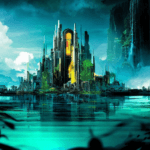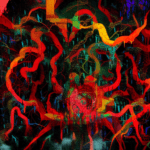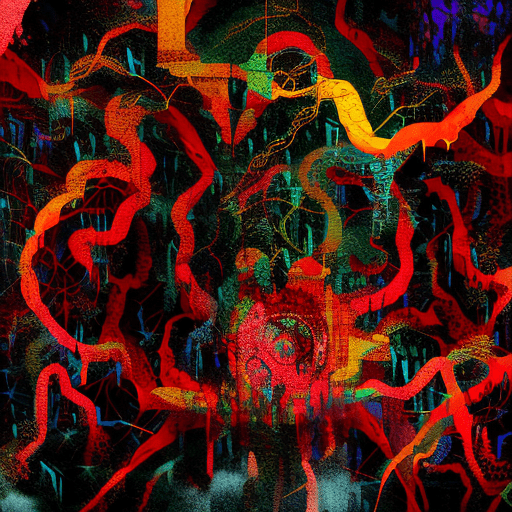One-line summary:
In “The Drowned World,” J.G. Ballard paints a vivid and unsettling picture of a future world where rising temperatures have melted the polar ice caps, causing catastrophic flooding and triggering primal instincts in humanity.
Exploring the Surreal Landscape:
“The Drowned World” is set in a post-apocalyptic future where global warming has caused the Earth’s climate to shift dramatically. As a result, the polar ice caps have melted, submerging cities and transforming the planet into a surreal and primordial landscape. The story follows Dr. Robert Kerans, a biologist stationed in a flooded London, as he navigates this new world alongside a small group of fellow survivors.
As the characters journey through the submerged city, they encounter a variety of strange and mutated creatures, including giant iguanas and deadly plants. The environment itself is described as a lush and overgrown jungle, with towering trees and dense vegetation reclaiming the urban landscape. Ballard’s vivid descriptions create a haunting and dreamlike atmosphere, blurring the line between reality and hallucination.
The Descent into Primal Instincts:
As the characters adapt to this new environment, they begin to experience a regression into their primal instincts. The rising temperatures and constant exposure to the sun trigger a resurgence of ancient memories buried deep within their subconscious. Dreams and hallucinations become more vivid, transporting them back to a time when the Earth was a tropical paradise.
Dr. Kerans, in particular, finds himself drawn to the allure of the sun and the growing allure of the natural world. He becomes increasingly detached from the remnants of civilization and embraces his own primal desires. This descent into instinctual behavior is mirrored in the other characters, as they grapple with their own inner demons and struggle to maintain their humanity in the face of a changing world.
A Reflection on the Fragility of Civilization:
“The Drowned World” serves as a cautionary tale, highlighting the fragility of human civilization in the face of environmental catastrophe. Ballard explores the idea that beneath the veneer of modern society, there lies a primal and savage nature that can resurface when pushed to the brink. The melting ice caps and subsequent flooding act as a catalyst, revealing the true nature of humanity and exposing the thin veneer of civilization.
Through his vivid and evocative prose, Ballard forces readers to confront the consequences of our actions and the potential for a future where the world we know is forever altered. The novel serves as a reminder that our actions have far-reaching consequences and that we must take responsibility for the impact we have on the environment.
Key Takeaways:
- Global warming can have catastrophic consequences, leading to the destruction of cities and the transformation of the natural world.
- Humanity’s primal instincts can resurface in extreme situations, challenging our notions of civilization and progress.
- The fragility of human society is exposed when faced with environmental catastrophe, highlighting the need for responsible action.
“The Drowned World” is a haunting and thought-provoking novel that explores the intersection of climate change, human nature, and the fragility of civilization.
In “The Drowned World,” J.G. Ballard presents a chilling vision of a future where the consequences of global warming have reshaped the world as we know it. Through his vivid descriptions and exploration of primal instincts, Ballard forces readers to confront the potential consequences of our actions and the fragility of human civilization. The novel serves as a stark reminder that we must take responsibility for our impact on the environment and work towards a sustainable future.












